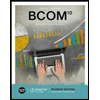
Case summary:A limited liability company was formed by three persons namely J, L and T contributing proportionally. J contributed 60 percent whereas L and T contributed 20% , respectively in its capital formation. The profit share of the company was not decided priorly which resulted in a dispute over the distribution of profits.
To find: The law applicable to the resolution of a dispute regarding the distribution of profit in an LLC.
Case summary:A limited liability company was formed by three persons namely J, L and T contributing proportionally. J contributed 60 percent whereas L and T contributed 20 % , respectively in its capital formation. The profit share of the company was not decided priorly which resulted in a dispute over the distribution of profits.
To find: The result of not having a specific LLC statute in most of the states.
Case summary:A limited liability company was formed by three persons namely J, L and T contributing proportionally. J contributed 60 percent whereas L and T contributed 20 % , respectively in its capital formation. The profit share of the company was not decided priorly which resulted in a dispute over the distribution of profits.
To find:The ways in which the dispute has been avoided.
Trending nowThis is a popular solution!

- I want question answer financial accountingarrow_forwardForeign currency remeasurement—Total assets A U.S.-based parent company acquired a European Union–based subsidiary many years ago. The subsidiary is in the service sector, and earns revenues and incurs expenses evenly throughout the year. The following preclosing trial balance includes the subsidiary’s original Euros-based accounting information for the year ended December 31, 2022, immediately prior to closing the company’s nominal accounts into the corresponding balance sheet accounts. It also includes the information converted into $US based on the indicated exchange rates: $US Conversion Weighted- Debits (Credits) Euros Current Average Historical Monetary Assets € 180,000.00 $216,000 $221,400 $234,000 Nonmonetary assets 720,000 864,000 885,600 936,000 Monetary Liabilities (90,000) (108,000) (110,700) (117,000) Nonmonetary liabilities (450,000) (540,000) (553,500) (585,000) Contributed capital (216,000) (259,200) (265,680) (302,400) Retained earnings…arrow_forward>>>> G סוי - C Mind Tap Cengage Learning CENGAGE MINDTAP Chapter 12 Homework: Managing Inventories in Supply Chains Questions Problem 12-44 Algo (Managing Fixed-Quantity Inventory Systems) 1. e 2. 3. 自 4. 5. ? ↑ 6. 7. 8. 9. 10. 11. ng.cengage.com + O C Excel Online Student Work Q Search this course ? Question 3 of 11 ► Hint(s) Check My Work Brenda opened a pool and spa store in a lively shopping mall and finds business to be booming but she often stocks out of key items customers want. The 28-ounce bottle of Super Algaecide (SA) is a high margin SKU, but it stocks out frequently. Ten SA bottles come in each box, and she orders boxes from a vendor 160 miles away. Brenda is busy running the store and seldom has time to review store inventory status and order the right quantity at the right time. She collected the following data: Demand = 9 boxes per week Order cost = $90/order Store open = 48 weeks/year Lead-time = 3 weeks Item cost = $180/box Inventory-holding cost = 10 percent per…arrow_forward
- How is corporation formed?arrow_forwardForeign currency remeasurement—Stockholders’ equity A U.S.-based parent company acquired a European Union–based subsidiary many years ago. The subsidiary is in the service sector, and earns revenues and incurs expenses evenly throughout the year. The following preclosing trial balance includes the subsidiary’s original Euros-based accounting information for the year ended December 31, 2022, immediately prior to closing the company’s nominal accounts into the corresponding balance sheet accounts. It also includes the information converted into $US based on the indicated exchange rates: $US Conversion Weighted- Debits (Credits) Euros Current Average Historical Monetary Assets € 160,000.00 $192,000 $196,800 $208,000 Nonmonetary assets 640,000 768,000 787,200 832,000 Monetary Liabilities (80,000) (96,000) (98,400) (104,000) Nonmonetary liabilities (400,000) (480,000) (492,000) (520,000) Contributed capital (192,000) (230,400) (236,160) (268,800) Retained…arrow_forwardווח CENGAGE MINDTAP G Chapter 09 Excel Activity: Exponential Smoothing Question 1 3.33/10 A e Submit 自 ? G→ Video Excel Online Tutorial Excel Online Activity: Exponential Smoothing ng.cengage.com Q Search this course ? A retail store records customer demand during each sales period. The data has been collected in the Microsoft Excel Online file below. Use the Microsoft Excel Online file below to develop the single exponential smoothing forecast and answer the following questions. X Open spreadsheet Questions 1. What is the forecast for the 13th period based on the single exponential smoothing? Round your answer to two decimal places. 91.01 2. What is the MSE for the single exponential smoothing forecast? Round your answer to two decimal places. 23.50 3. Choose the correct graph for the single exponential smoothing forecast. The correct graph is graph A ☑ Back Observation Exponential Smoothing Forecast 100 Forecast 95 95 90 90 A-Z Office Next A+arrow_forward
- What monthly compounded interest rate would Second National Bank need to pay on savings deposits to provide an effective rate of 6.2%?arrow_forward? ? Financial accounting questionarrow_forwardThe income statement of a merchandising company includes Cost of Goods Sold (COGS) and gross profit, which are not found on a service company’s income statement. This is because merchandising companies sell physical products, while service companies provide intangible services. Service company income statements are simpler, usually showing revenue from services minus operating expenses like salaries, rent, and supplies. In short, the main difference is that merchandising firms track product costs and gross profit, while service companies do not. Respond to this post. agree or disagreearrow_forward
 BUSN 11 Introduction to Business Student EditionBusinessISBN:9781337407137Author:KellyPublisher:Cengage Learning
BUSN 11 Introduction to Business Student EditionBusinessISBN:9781337407137Author:KellyPublisher:Cengage Learning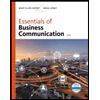 Essentials of Business Communication (MindTap Cou...BusinessISBN:9781337386494Author:Mary Ellen Guffey, Dana LoewyPublisher:Cengage Learning
Essentials of Business Communication (MindTap Cou...BusinessISBN:9781337386494Author:Mary Ellen Guffey, Dana LoewyPublisher:Cengage Learning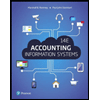 Accounting Information Systems (14th Edition)BusinessISBN:9780134474021Author:Marshall B. Romney, Paul J. SteinbartPublisher:PEARSON
Accounting Information Systems (14th Edition)BusinessISBN:9780134474021Author:Marshall B. Romney, Paul J. SteinbartPublisher:PEARSON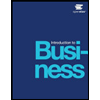
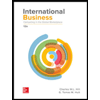 International Business: Competing in the Global M...BusinessISBN:9781259929441Author:Charles W. L. Hill Dr, G. Tomas M. HultPublisher:McGraw-Hill Education
International Business: Competing in the Global M...BusinessISBN:9781259929441Author:Charles W. L. Hill Dr, G. Tomas M. HultPublisher:McGraw-Hill Education